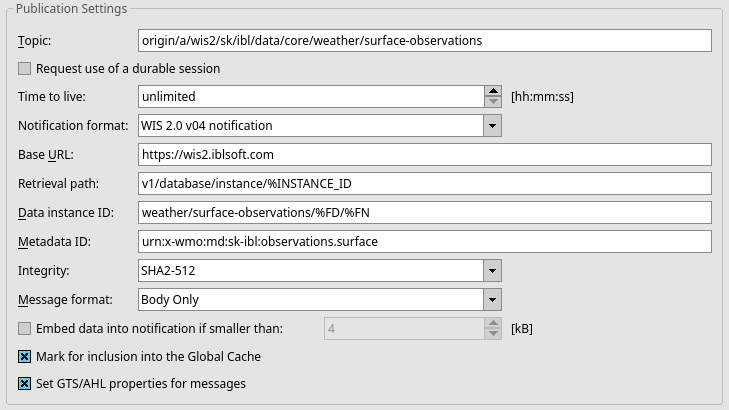
The WMO Information System 2.0 (WIS 2.0) is a groundbreaking initiative by the World Meteorological Organization (WMO) designed to modernize the global distribution of meteorological, climatological, and hydrological data. At the core of WIS 2.0 is a new publish/subscribe paradigm, which allows for more efficient and scalable data exchange compared to the traditional Global Telecommunication System (GTS). By adopting WIS 2.0, meteorological services can ensure more agile and reliable data dissemination to those who subscribe to it, reducing unnecessary data traffic and improving overall performance.
At IBL Software Engineering, our passion for innovation led us to be the first to implement WIS 2.0 protocols and functionalities. We were also the only software vendor to participate in the WMO Secretariat's WIS 2.0 Pilot Phase, testing and refining the integration to ensure our solutions are optimized for the future of meteorological data exchange.
Moving Weather is fully aligned with WMO Information System (WIS) 2.0 standards and supports publishing data through brokers while also providing the capability to retrieve data from global caches or receive it from other brokers. Moving Weather meets the highest international standards, ensuring efficient data exchange. It is compliant with:
The publish-subscribe model is the new standard for meteorological data exchange under WIS 2.0. In this system, meteorological centres publish notifications about the data they produce to a local MQTT broker on a topic that conforms to the WIS 2.0 Topic Hierarchy (WTH). The notification contains mainly a link/URL pointing to the data resource, but smaller data can be embedded directly within the payload of the notification. The Global Broker services then collect those notifications to distribute them globally.
The Global Cache services collect data, based on the notifications, from WIS 2.0 nodes to ensure global availability of the core/essential data. Data consumers interested in specific data can subscribe to specific topics on the Global Brokers without accessing the original source of the data and without asking for a change in some “routing catalogue.”

Moving Weather can interact with Global Discovery Catalogue (GDC) services in both directions. Data producers can create and modify descriptions of datasets and services using the integrated Metadata Editor, with the resulting descriptions being sent as WMO Core Metadata Profile (WMCP) 2.0 records to the GDC. At the same time, data consumers can query GDC services to discover relevant datasets and subscribe to them through the Global Broker service. This bidirectional integration streamlines the data discovery and subscription process, making it easier for both producers and consumers to manage and access meteorological information in a standardized, efficient manner.
WIS 2.0 mandates that meteorological observations conform to the WIGOS (WMO Integrated Global Observing System) standard, requiring data to be provided in BUFR format. To support this transition, Moving Weather offers seamless data conversion into WIGOS-compliant BUFR templates, ensuring alignment with the WIGOS template and numbering scheme.
This ensures that observational data is fully compliant with the latest WMO standards, facilitating seamless integration into the WIS 2.0 ecosystem.

In addition to the traditional method of providing data as files, Moving Weather supports more advanced, interactive access to data through APIs. Utilising the OGC Environmental Data Retrieval (EDR) API standards recommended by WMO and fully compliant with OpenAPI, Moving Weather enables users to request specific, live, dynamic datasets tailored to their needs. The system interprets these requests, retrieves the relevant data, and delivers it seamlessly using future-proof API.
With Moving Weather, transitioning to WIS 2.0 is straightforward and efficient. Our solution ensures a smooth migration without disrupting daily operations while significantly improving the efficiency of weather data exchange. Moving Weather allows meteorological services to collect all relevant data from their existing systems, publish it on WIS 2.0 as needed, and communicate seamlessly with other systems, including bridging to WMO's Global Telecommunication System (GTS) networks.
Fully compliant with the latest WMO standards and supporting modern data protocols, cloud technologies, and API retrieval, Moving Weather provides meteorological centres with a future-proof solution for long-term reliability, enhanced performance of upcoming datasets, and effortless integration into the global WIS 2.0 network.